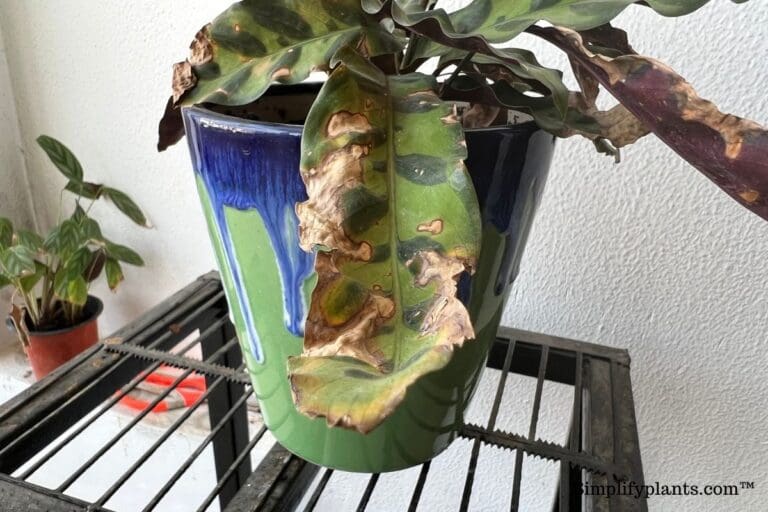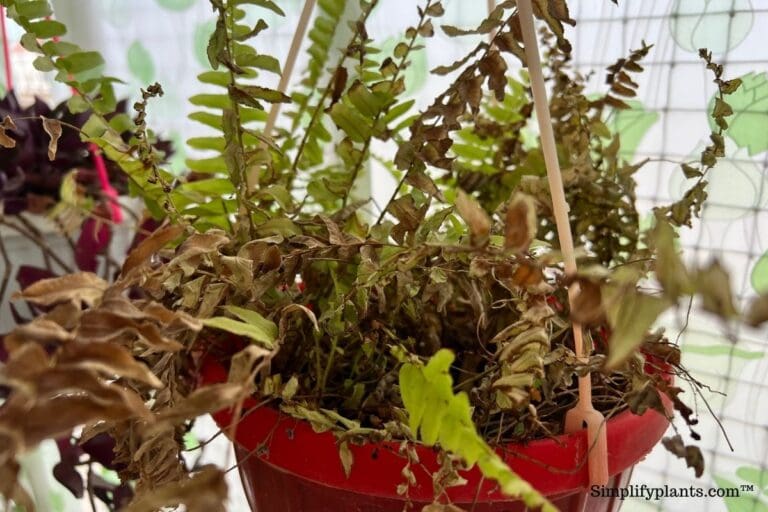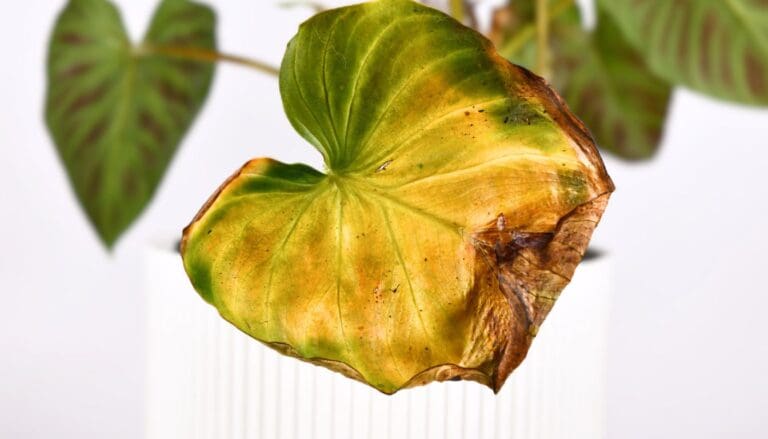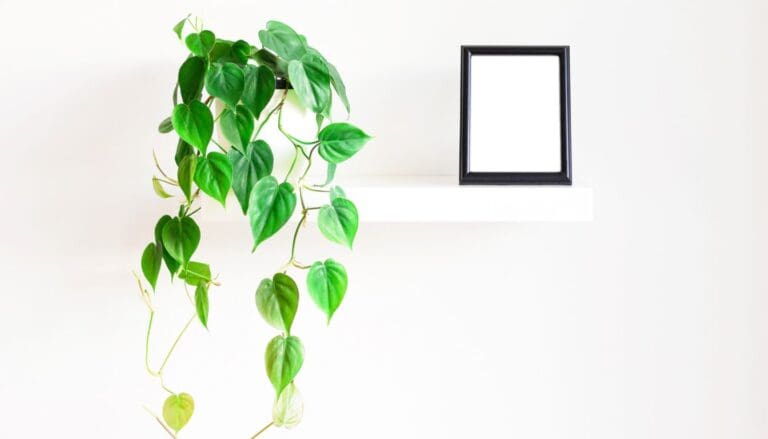7 Signs Your Spider Plant Is Dying (+What To Do)
The art of keeping a plant is to keep it thriving. Also, the art of keeping a spider plant is to keep the mother plant and the spider pup alive.
If we notice that the plant is unhealthy, then the spider plant sends out signals. In certain scenarios, we will see that the plant is droopy or the color of the leaves has changed to yellow or brown.
It could also be that the spider plant is not growing spider pups, or the spider plant has suffered stunted growth.
The signs could be many, but we will need to understand the signals and help the spider plant.
Every symptom is related to a specific problem, and there is a particular way to deal with it. If we can identify our spider plant’s problem, we can take appropriate action to save the plant from dying.
In this guide, we will take a closer look at seven signs of a dying spider plant and what we can do to save them from dying. Let’s get right into it.

Please note: Simplify Plants is reader-supported. Some links in the post are affiliate links and I get a commission from purchases made through links in the post.
7 signs a spider plant is dying
Most importantly, we need to take care of the watering situation and the timings for any houseplant. The spider plant is a tropical plant that needs a proper watering regime.
The spider plant does not need much water and needs to dry out in between waterings. The soil should remain dry and not moist.
During winter, the spider plant needs to be watered less and requires no feed. Winter is the state of dormancy for most houseplants.
Though the spider plants do not require a heavy watering regime for winter, it will need a good misting. The spider plant loves moderate humidity.
Around the early spring, we will notice the spider pups growing on the mother plant. If we do not notice the pups growing, it could be an issue with the plant.
There are other reasons and signs that could tell that our spider plant is unhealthy, and we will discuss the same in the below table.
Below is the list that will tell us that the plant is in danger and needs your attention.
| Problems | Causes |
|---|---|
| Leaves turning yellow/brown | –Pests –Overwatering of the plant –Overfertilization |
| White spots | –Fungal or bacterial disease |
| Leaves curling | –Environmental changes –Too much water –Pests |
| Droopy leaves | –Too much stress –Watering issues |
| Dying leaves | –Environmental stress –Pests –Watering issue |
| Leggy growth | –Low light –Overfertilization |
| Pups Growth | –Overwatering –Overfertilization |
Let us understand the signs and causes. We will also talk about how to avoid the situation.
1) Spider plant leaves turning yellow and brown
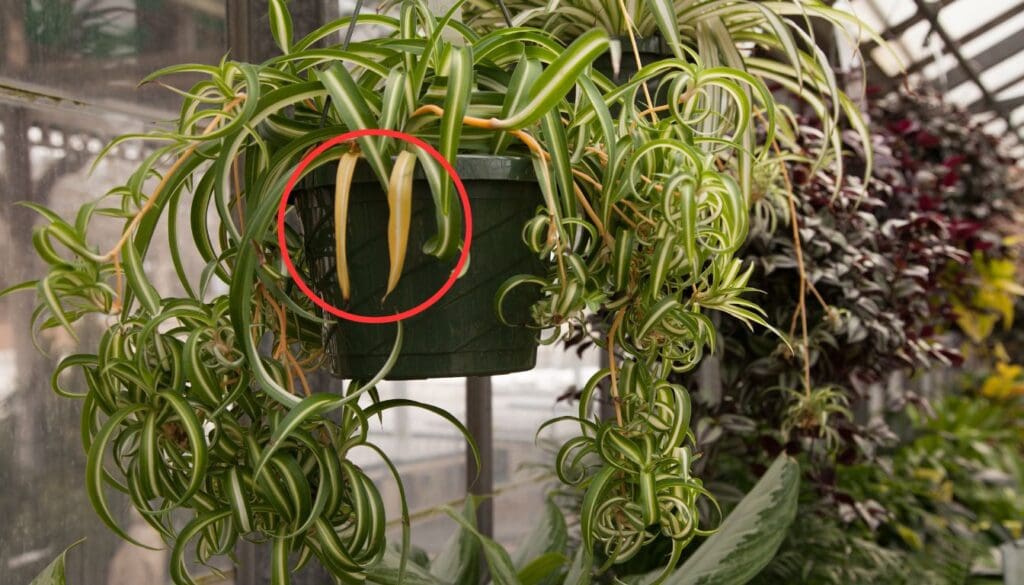
Have you noticed yellow or brown spots on the leaves of your spider plant? That is mostly because of overwatering your spider plants, overfertilization, or the pest situation.
Now you might be wondering how? So, let’s get right into the details.
Overwatering
As you might have already known, the spider plants do not require much water and need to be dried out in between waterings.
The most common mistake that even experienced plant owners make is overwatering a plant. Spider plants can get overwatered easily.
We will notice that the leaves of the spider plant have yellow leaves, and if left unchecked, then the leaves will turn brown and shed off the plant.
We need to check for the drainage holes and the drainage tray. Please be sure that the drainage tray does not have excess water collected.
During the winter, the spider plant doesn’t require much water and can be watered once a week. The best technique is by checking the soil.
How to avoid overwatering?
We can overcome the overwatering situation with the steps stated below:
- Are you following a watering regime?
- Create a calendar or a digital note
- Always clean the drainage holes
- Remove excess water from the drainage tray
- Always feel the soil before watering
- Let the soil dry out before being watered again
- Do not water regularly during the winter
If we follow the steps stated above, we can avoid the overwatering situation. But, what if we are already facing the issue?
If we have overwatered the plant already and the soil is soggy, then remove the plant from the pot and place it in a different pot.
We will either need to repot the plant or change the soil to a new well-draining potting soil. Also, trim the yellow or brown leaves, as these won’t help the plant.
In most cases, repotting has saved the spider plants.
If the situation is worse and we do not find an option to revive the plant, then it is suggested to try propagating the spider plants.
All take the necessary steps when you spot the brown leaves. Overwatering may kill a Spider plant. So beware!
Also read: How much water do spider plant need?
Pests
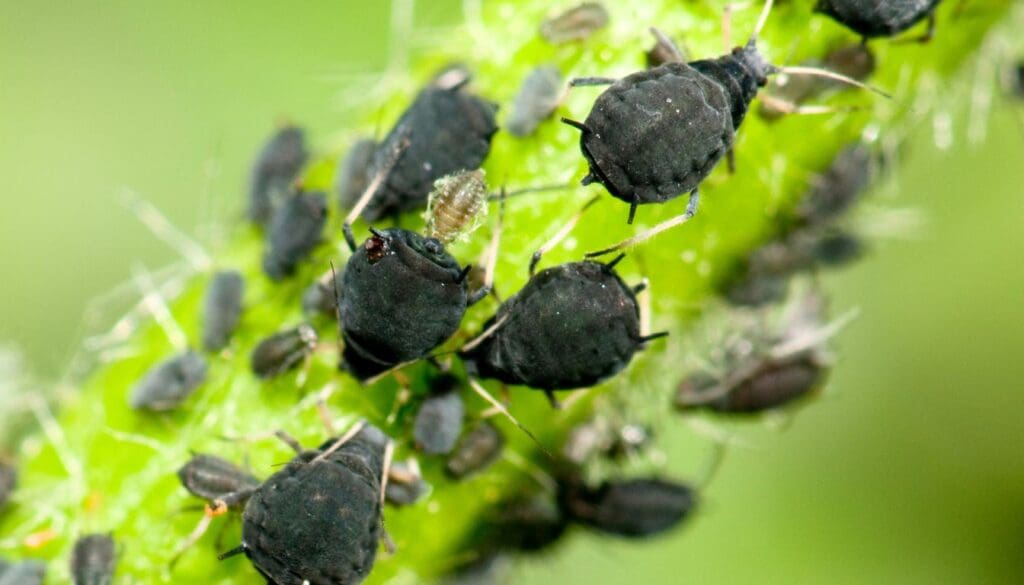
Spider mites, mealybugs, and aphids attack the spider plants when it is most vulnerable.
We see the pests attacking the spider plant because of the overwatering and the overfertilization of the plants.
The spider plant may experience a root rot issue because of overwatering and overfertilization, leading to pests situation.
When the pests attack the spider plant, they feed on the plant’s newest leaves. Because of the feeding, the leaves will have holes and marks.
We will also notice the leaves turning yellow and then brown. If neglected further, the leaves will shed off the plant.
To avoid the situation, we have two different options:
- Use of pesticides
- Organic methods
The first option to remove the pests is by applying a very light solution of pesticide, which can be bought online or from the market.
However, please use a very light dosage.
The next option is to use all organic methods. We suggest users going for a neem oil solution for the spider plants.
You can spray neem oil solution on the spider plant for 14 days. We will need to follow the process to ensure that both the eggs and the pests are exterminated.
Whichever process we choose will eliminate the issue, but it is on us. We always suggest to go all organic and not the artificial way.
Overfertilization
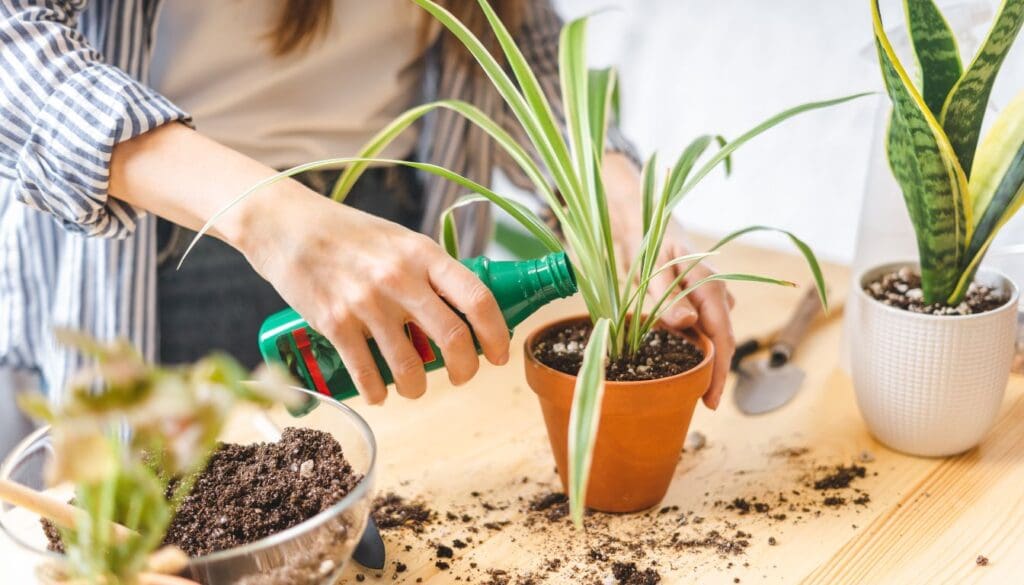
The spider plants require a very dilute dosage of 2-4-4 or a 4-4-4 all-process fertilizer.
We need to fertilize the spider plant only during the growing season from spring to late summer, not during the winter.
If we have overfertilized the spider plant, then we will see that the plants have suffered through stunted growth and will experience color changes on the leaves.
The color of the leaves will change to yellow or brown. We will also notice brown tips on the leaves.
To avoid overfertilizing issues, we will need to:
- Keep the spider plant under running water.
- Follow the above process 4-5 times. That will ensure that the excess fertilizer is washed away.
- Now, take another fresh pot.
- Fill the pot with well-draining potting soil, pumice/perlite, and some compost.
- Place the spider plant in the middle of the pot.
- Now, add some more soil to cover the plant.
- Gently tap the pot to remove the air pockets.
- Water the plant once repotted, but do not overwater.
- Do not fertilize the plant for a month.
Also read: Do spider plant need fertilizer? How much?
2) White spots appears on spider plant leaves
Have you been noticing any white spots on the leaves of your spider plant? Does that feel like a powdery substance?
If the answer to the above question is yes, please buckle up because we need to act very fast.
This white substance is a fungus and is known as powdery mildew. When this fungus attacks the spider plant, they begin with a few spots.
Once settled, they spread like wildfire. If your plant is grouped, the first suggestion is to isolate the plant from the others.
The fungal or bacterial attack on the spider plant is because of the root rot situation or if the plant has been overfertilized.
To cure this, we will need to follow the steps:
- Take three teaspoons of baking soda.
- Take one teaspoon of vegetable oil.
- We can also add one teaspoon of eco-friendly liquid soap.
- Mix the solution in 1 liter of water
- Keep the solution in a spray bottle.
- Spray the entire plant with the solution after sunset.
Note: The process requires the use of vegetable oil, and hence it is always suggested to spray the plant after sunset. If we spray the solution in the sun’s presence, then the oil which is stuck to the leaves might cause a burn.
Always isolate the plant with a fungal infection. We can also use the pesticides or fungicides available on the market but with a very dilute dosage.
3) Spider plant leaves starts curling
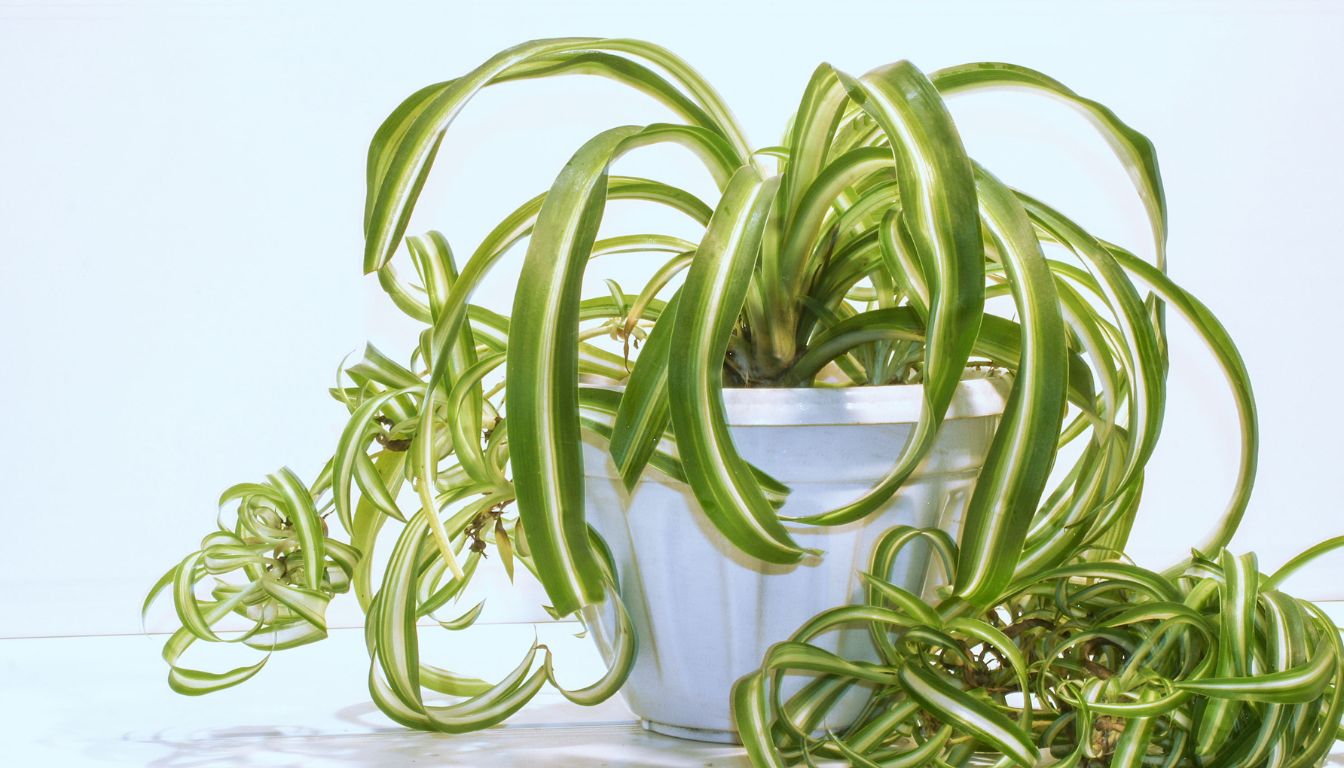
Leaves curling on a spider plant is a common issue and can be caused by simple reasons like temperature changes and environmental changes.
Well, before we judge further, do look for the pests on your plant.
If there are spider mites on the plant, it may cause the plant leaves to curl. Spider mites are tiny white spiders and feed on the leaves, mostly the new leaves.
It could also be because of irregularities in the watering regime. Let us understand the reasons.
Environmental changes
Have you just bought the plant and have issues with the spider plant? Are the leaves curling?
It could be that the spider plant has not adapted to the situation yet, and needs some time to adapt to the new environment.
It can be because of the same reason that the plant is not growing and has curled up leaves.
The spider plant needs an hour or two of direct sunlight for the leaves to get good variegation.
However, we cannot get this at once. We cannot choose to keep the plant out in the sun. The spider plant cannot thrive in the direct sun as it experiences burns.
If we choose to keep the plant outside, then gradually provide direct sunlight for an hour and then increase it.
The change should be gradual and not at once.
If we do not allow the plant to adapt, then the changes can be seen in the leaves by the leaves curling.
Also read: Can spider plant be kept outside?
Too much water
The spider plant leaves will also curl because of irregularities in the watering schedule and if they have been overwatered.
Spider plants hate being overwatered and show signs of curling leaves.
The leaves will also turn yellow/brown and shed off the mother plant.
We can avoid overwatering situations just by being a little careful.
The steps are:
- Always feel the soil; It should be dry and not moist
- Never add extra water and check if the water is drained out
- The drainage holes should be clean and not blocked
- Adding a note to the plant or a digital reminder
The above steps will ensure that our lovely plants do not get overwatered. The plant is already stressed, and we need not stress the plant more.
Also read: Why is my spider plant turning yellow?
4) Droopy leaves can be seen on spider plant

What happens when you are sad? We drop our heads and look down. It is the same as the spider plants.
For reasons like stress and watering issues, the spider plant can have droopy leaves, or the plant will look droopy.
We will focus on the issues and understand what causes droopy leaves.
Too much stress
You should treat spider plants with some extra love and care. You can grow a beautiful garden from the little spider pups within no time.
However, the spider plant needs some extra moisture during the winters. It does not like the cool draft from the windows.
To show signs, the spider plant will develop droopy leaves. We will need to fix the situation.
Furthermore, never move any houseplant from one extreme to another. Give the plant some time, allow it to settle.
The plant will adapt and be healthy again. We often find this situation whenever the plant is purchased and brought to a new environment.
During winter, mist the plant regularly and keep it away from the radiators and air-conditioning vents. Remember! No feed during winter.
Also read: Why is my spider plant not growing?
Watering Issues
Both underwatering and overwatering of the spider plant can cause the leaves to droop.
Underwatering and Overwatering
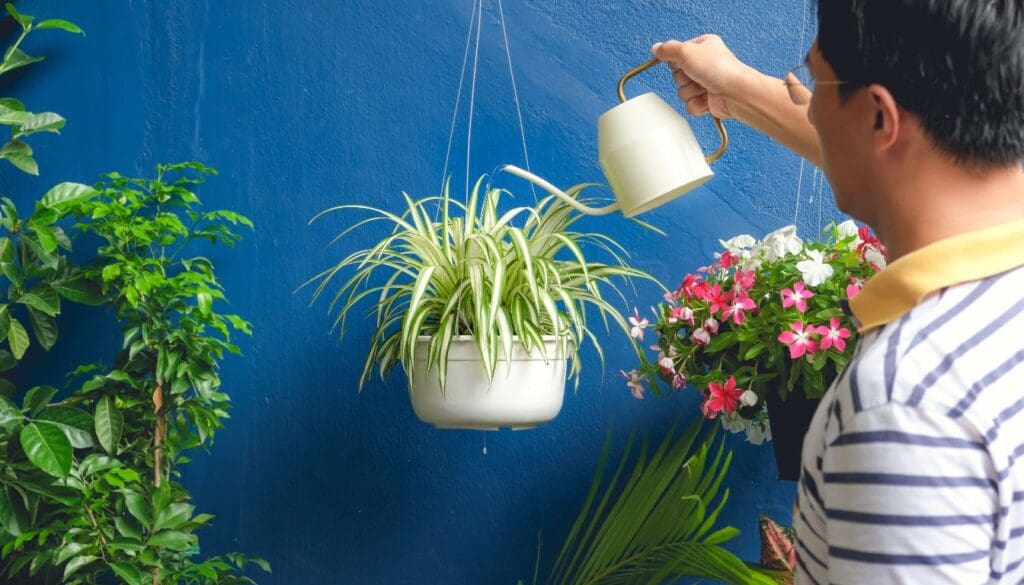
Droopy leaves can be formed both as a sign of overwatering the plant and underwatering the plant.
Spider plants do not require a hefty amount of water, and watering the plant once a week is sufficient. We can also go for less but check the soil first.
The soil should feel dry and not moist. This way, we will know that the plant has not been overwatered.
When the soil is dried, then we will be shocking the plant, and hence the spider plant will start to wilt.
Then again, if the plant is overwatered, we will notice that the plant leaves will start to droop first and then turn yellow.
Finally, overwatering will kill the plant as the plant will start shedding its leaves.
Also read: Overwatering vs Underwatering
5) Spider plant leaves starts to wilt
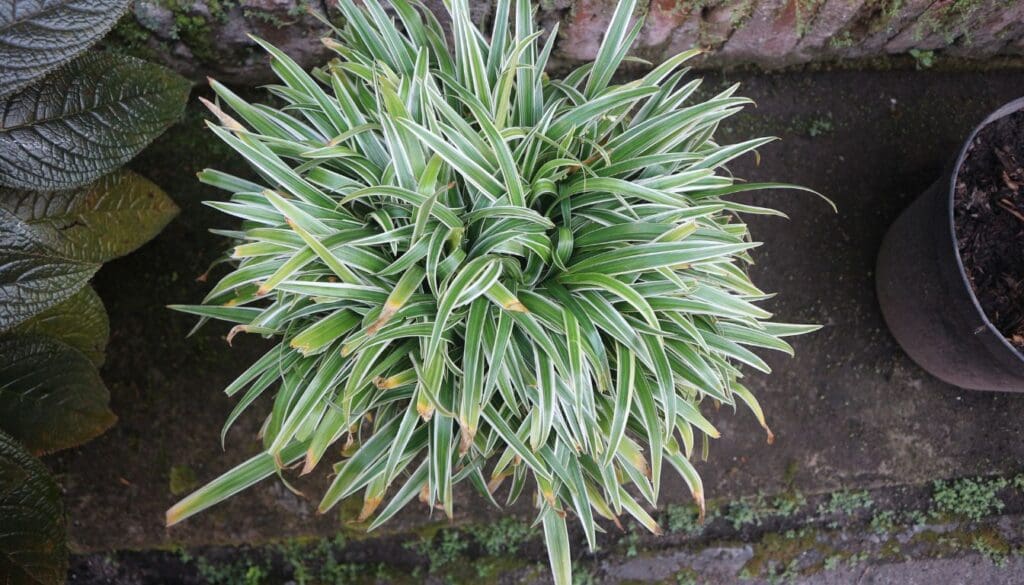
The dying leaves are similar to the droopy leaves of the spider plant. If the plant is neglected, then it isn’t easy to get back the plant to normal.
The causes of the dying leaves of the spider plant are as follows:
Environmental Stress
Spider plants bloom vigorously during the warm climates and hate the winter.
During, late winter the spider plant experiences a bit of hustle, but little care will get us through the tough spots.
They need a little misting now and then from winter to late spring.
The spider plant goes through trouble if it gets the cool draft from the windows. We need to remove the plant from the spot or close the windows.
Another thing to consider for the spider plant’s placement is to keep it away from the radiators and the air-conditioners.
Finally, never move the plant from one extreme to another.
That causes a disbalance in the environmental conditions of the spider plant.
Pests
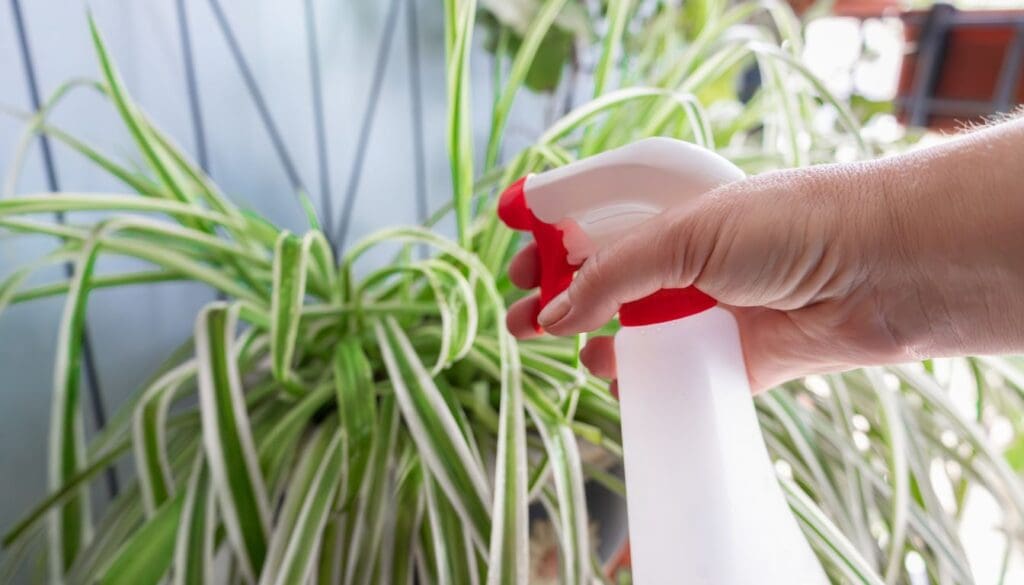
Have you been noticing that the spider plant is looking unhealthy these days?
Give a close look at the plant and the leaves. If we see white spots on the leaves, it could be spider mites.
Also, if the leaves have small cotton fury balls, it could be mealybugs. If the plant has a fungal infection, it could be powdery mildew.
The plant leaves will feel sticky, and we need to correct the situation as soon as possible.
Because of the pest issue, the spider plant leaves will look droopy and will turn yellow or brown. We will also notice small holes and spots on the leaves.
To get rid of the situation, we will need to isolate the spider plant first and then act. Spray the spider plant with a neem oil solution or a pesticide.
We will need to follow the 14-day treatment procedure to eradicate the pests and the plant’s eggs.
Whether you want to use pesticide or organic treatment depends solely on you.
Watering issues
The watering issue is the root of all problems starting on a plant. If the plant is underwatered, then it will go droopy.
Overwatering, the plant also shows complications if neglected. The leaves go droopy, turns yellow or brown, and finally shed off the plant.
For the sole reason to avoid the situation, we need to ensure that the soil is dried out before watering.
Always feel the soil and not only the top layer but dig deep up to an inch to check the water.
We have already mentioned the steps of how to avoid the overwatering situation. Always check the drainage holes and the drainage tray.
6) Spider plant starts getting leggy growth
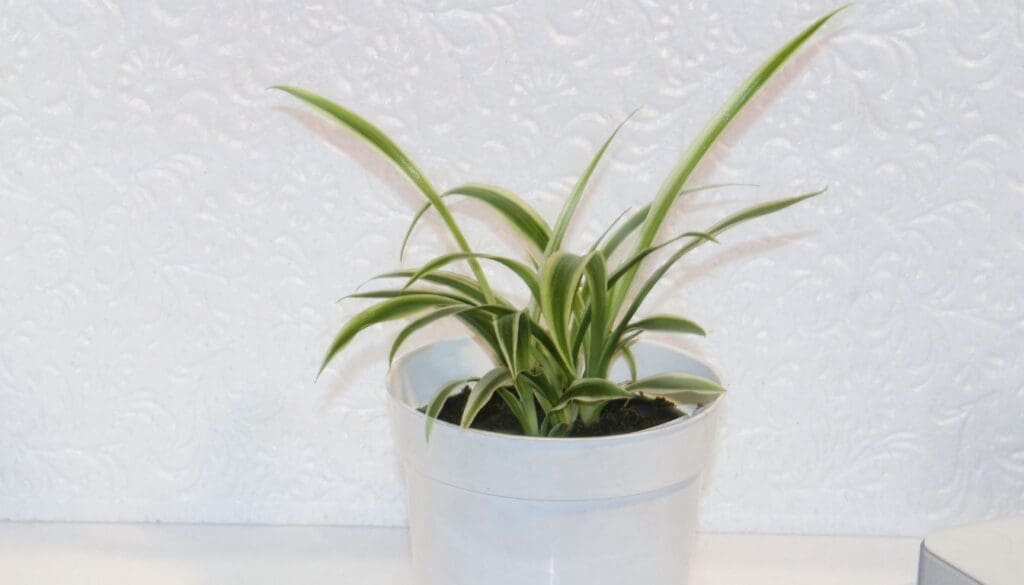
Leggy growth is because of the stunted growth caused by a plant or maybe because the plant has suffered a shock.
The prime reason for the plant’s leggy growth is the overfertilization of the plant and because of the light conditions.
Overfertilization
The feed requirement for a spider plant is a very dilute dosage of a 2-4-4 or a 4-4-4 all-purpose fertilizer.
Hence, try to add less than the amount prescribed to avoid overfertilization. The spider plant does not require any feed during the winter.
When we overfertilize the plant, the plant suffers through stunted growth and might droop.
Whenever the plant is overfertilized then, we need to remove the excess fertilizer. The signs of overfertilization are brown tips, droopy leaves, and wilted plants.
To avoid this, we will need to keep the plant under running water. A repot also might be necessary.
Low Light

Always try to keep the spider plant in a place where it gets bright indirect sunlight.
You can also provide the spider plant with an hour of direct sunlight. It helps the plant with the variegation on its leaves.
However, there is a trick behind getting this right. We cannot change the conditions of a plant all of a sudden.
Always move the plant from one location to another gradually. Providing the plant with direct sunlight helps with the color of the leaves.
Low light situations or a dark spot makes the plant dull, and the spider plant does not develop good variegation on the leaves.
During the winter, the spider plant requires a little misting, and we need to close the window from where it will get a cool draft.
We can also use artificial light for the spider plants.
Also read: How much light do spider plant need?
7) Spider plant has no new growth
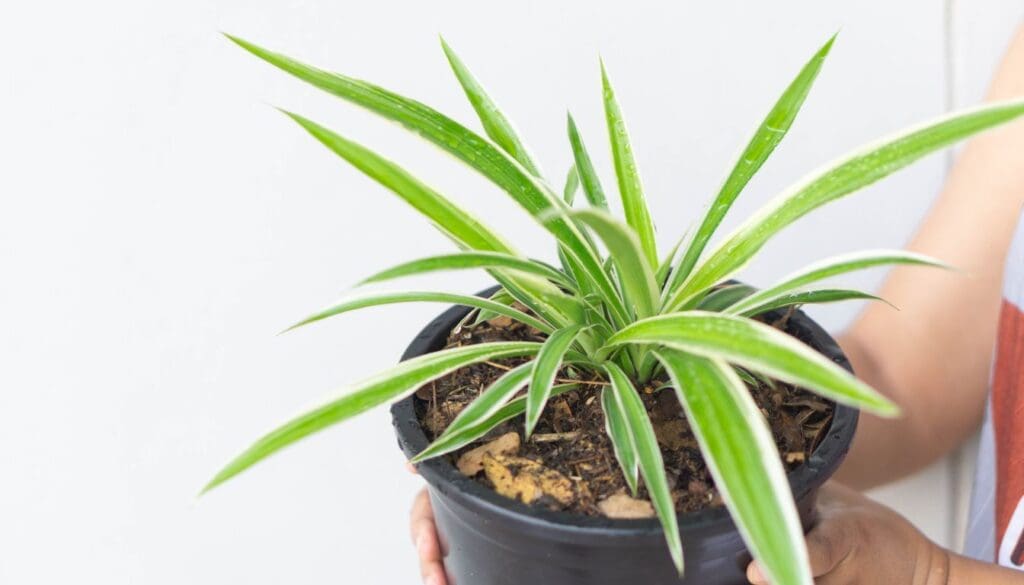
Once the winter is over, we should see the spider pups’ growth. When we see the pups, the spider plant should get extra attention.
If we do not see the pups’ growth, then there is something wrong with the spider plant.
Let us understand the reasons behind the no growth of pups on your spider plant.
Overfertilization
As discussed above, the spider pups are essential for developing a spider plant, and if the spider plant is suffering a stunted growth, we won’t notice the pups.
Overfertilization causes stunted growth, and the plant suffers from this condition.
Always use a very light and a dilute dose of fertilizer for the spider plant.
A 2-4-4 or a 4-4-4 fertilizer is appropriate for the spider plant.
Overwatering
The spider plant does not require much water during the winter. However, they will require occasional misting.
We often stress the plant because of the overwatering situation.
The soil should be dry and not soggy for the proper development of a spider plant.
Regular misting with neem oil is the key to spider pups’ growth and protection from pests.
If the spider plant is suffering from an overwatering situation, then the plant will go droopy, and there will be yellow/brown leaves on the plant.
We might need to trim the yellow/brown leaves to reduce the stress. It will help the plant with carrying out photosynthesis easily.
If nothing works, try a repot of the spider plant in a new pot using a well-draining potting soil and a pumice/perlite mixture.
If there are any questions regarding your spider plant, feel free to contact us!
Also read: How to save a spider plant from dying?
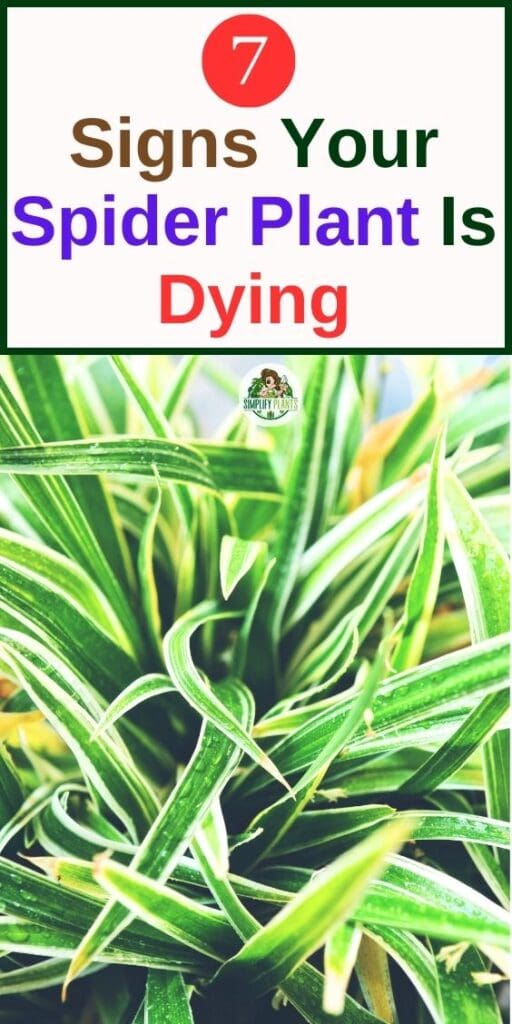
Source: Common insect pests and diseases, College of agricultural studies, Spider Plants Introduction, University of Vermont, Spider plant care, National science foundation.
Recommended Garden Supplies
| Product Image | Our Recommended Gardening Supplies | Check Offers! |
|---|---|---|
Top Top
Top
Top
Top
Top
Top
Top
Top | rePotme Houseplant and Tropical Classic Potting Soil Mix | Check Offer On Amazon |
 Top
Top
Top
Top
Top
Top
Top
Top | Espoma Organic Indoor Plant Food | Check Offer On Amazon |
 Top
Top
Top
Top
Top
Top
Top
Top | GooingTop LED Grow Light 6000K Full Spectrum Clip Plant Growing Lamp | Check Offer On Amazon |
 Top
Top
Top
Top
Top
Top
Top
Top | Soil Moisture Meter | Check Offer On Amazon |
 Top
Top
Top
Top
Top
Top
Top
Top | Govee Hygrometer Thermometer, Bluetooth Enabled! | Check Offer On Amazon |
 Top
Top | LEVOIT Humidifiers for Large Room(Best For Plants) | Check Offer On Amazon |
 Top
Top
Top
Top
Top
Top
Top
Top | Upgraded DIY Automatic Drip Irrigation Kit, 15 Potted Houseplants Support | Check Offer On Amazon |
 Top
Top
Top
Top
Top
Top
Top
Top | Stainless Steel Heavy Duty Gardening Tool Set | Check Offer On Amazon |
 Top
Top
Top
Top
Top
Top
Top
Top | Bonide Insecticidal Soap | Check Offer On Amazon |
 Top
Top
Top
Top
Top
Top
Top
Top | Bonide 32 oz Spray Neem Oil for Organic Gardening | Check Offer On Amazon |
 Top
Top
Top
Top
Top
Top
Top
Top | Garden Safe Fungicide | Check Offer On Amazon |

